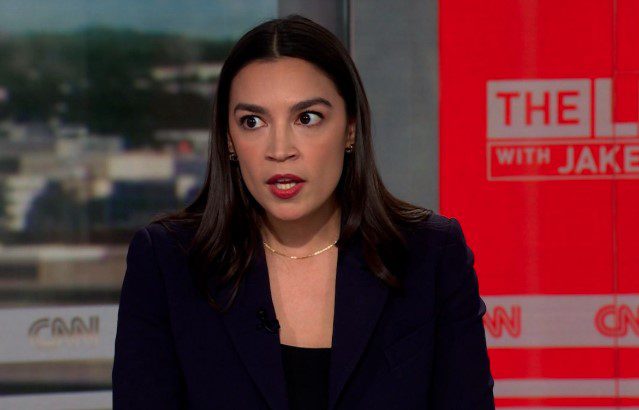In a recent livestream, U.S. Representative Alexandria Ocasio-Cortez, widely known as AOC, expressed concern about how Algorithmic Polarization on social media platforms is influencing people’s opinions and dividing communities.
She said that while the United States has long been politically divided, the situation has worsened in recent years because of technology. According to her, people are no longer just politically polarized — they are now algorithmically polarized, a condition she described as a growing form of Algorithmic Polarization shaping public thought and online behavior.
How Algorithmic Polarization Is Changing the Way People Think
AOC explained that social media algorithms — the computer programs that decide what content users see — have created echo chambers where people are repeatedly shown the same type of information. This growing algorithmic polarization means that a person who follows political pages or interacts with specific types of posts is likely to see more content that agrees with their beliefs. Over time, this shapes their worldview and makes them less likely to encounter differing opinions.
She noted that the shift has been especially noticeable since 2020. “Our country has become algorithmically polarized,” AOC said. “The social media landscape has changed dramatically, even in just the last couple of years.”
Social media platforms like Facebook, Instagram, X (formerly Twitter), and TikTok use algorithms to keep users engaged for longer periods. These systems analyze what users like, share, and comment on — and then show them more of the same. While this makes apps more entertaining, it also narrows the kind of information people receive. This is one of the main causes of algorithmic polarization today.
The Impact of Online Echo Chambers
AOC’s comments came while she discussed the spread of misleading images from protests in cities such as Los Angeles and Portland during the Trump administration. She pointed out that people viewing those events online often saw very different versions of reality depending on which social media spaces they occupied.
“People are living in completely different information worlds,” AOC said. “There are people that are living in a MAGA universe online, that their algorithms feed that to them.”
This situation, she added, is not limited to one political side. People who consume progressive or left-leaning content also experience their own form of algorithmic polarization. “That happens as well in progressive content and algorithms,” she said.
In simple terms, algorithmic polarization can trap users inside a digital bubble. When someone likes or comments on posts that support a particular opinion, the algorithm begins to show them even more similar posts. Eventually, their feed is filled only with one type of viewpoint — reinforcing their existing beliefs.
How Bernie Sanders and AOC Are Winning Back Disillusioned Voters in a Bold Rebirth
Experts have warned that this process makes it harder for people to understand others’ perspectives or engage in healthy debate. It can also lead to misinformation spreading quickly because people trust content that matches their opinions.
In 2021, executives from several major tech companies were questioned by lawmakers in Congress about the role of algorithms in shaping public opinion. The discussion focused on how social media might be influencing political discourse and spreading misinformation — two direct effects of algorithmic polarization. Many lawmakers have also raised concerns that foreign countries could exploit these same algorithms to deepen divisions in the U.S.
AOC’s remarks added another dimension to the ongoing debate — suggesting that the issue may not only come from outside manipulation but also from the built-in design of these digital systems.
AOC Calls for Awareness and Community Efforts
During her livestream, AOC urged people to be more aware of how social media affects what they see and believe. She said that people should try to verify information themselves rather than depending only on what appears on their feeds.
According to her, the rise of algorithmic polarization means individuals must take extra steps to stay informed and avoid falling into the trap of one-sided thinking. She encouraged her audience to document things directly when possible and to focus on understanding others through personal interactions and community-building.
“Oftentimes, the things that persuade people are not just about facts or policy,” she said. “It’s also about psychology and community.”
AOC’s comments reflect a growing awareness among policymakers that the digital environment is shaping public behavior in ways that were not fully understood a few years ago. Her statement also points to how rapidly technology has evolved since 2020, changing how people consume news and form opinions.
The issue of algorithmic polarization affects people across the political spectrum — from conservatives to liberals. Social media, which was once seen as a tool for connection and free expression, now plays a complex role in how societies view themselves and each other.
Amid shutdown chaos, AOC emerges as bold voice for uninsured children and working-class families
AOC’s concern underscores a larger conversation happening around the world: whether social media platforms have too much control over what users see and think. While she did not offer specific policy suggestions, her message was clear — awareness is the first step in addressing the growing divide caused by algorithmic polarization.
Her statement also aligns with previous discussions in Washington, where lawmakers have debated how technology companies can be held accountable for the social and psychological effects of their platforms.
As AOC highlighted, people must recognize that what appears online may not always reflect the broader reality. In her view, understanding how algorithmic polarization works and how it influences behavior is crucial to rebuilding a more balanced view of the world.





